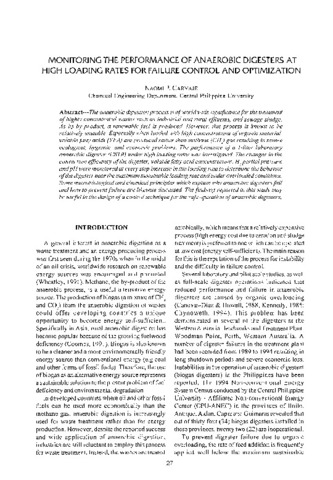Monitoring the performance of anaerobic digesters at high loading rates for failure control and optimization
Résumé
The anaerobic digestion process is of world wide significance for the treatment of highly concentrated wastes such as industrial and rural effluents, and sewage sludge. As its by product, a renewable fuel is produced. However, this process is known to be relatively unstable. Especially when loaded with high concentrations of organic material, volatile fatty acids (VFA) are produced rather than methane (CH) gas resulting in severe ecological, hygienic, and economic problems. The performance of a 1-liter laboratory anaerobic digester (CSTR) under high loading rates was investigated. The changes in the conversion efficiency of the digester, volatile fatty acid concentrations, H2 partial pressure and pH were monitored at every step increase in the loading rate to determine the behavior of the digester near the maximum sustainable loading rate and under overloaded conditions. Some microbiological and chemical principles which explain why anaerobic digesters fail and how to prevent failure are likewise discussed. The findings reported in this study may be useful in the design of a control technique for the safe operation of anaerobic digesters.
Description
Journal article
Suggested Citation
Carnaje, N. P. (1996). Monitoring the performance of anaerobic digesters at high loading rates for failure control and optimization.Type
ArticleCollections
- Engineering Journal [23]
- Journal articles [17]


